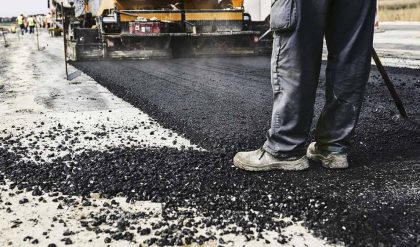HISTORY
Systematic fuel quality improvements in the European Union (EU) have historically preceded – and enabled – the successful introduction of more stringent tailpipe emission standards. The EU’s fuel quality improvement initiatives have resulted in region-wide supply of both gasoline and diesel fuel (highway and nonroad) with near-zero sulfur content.
The first set of CEN standards in 1993 for automotive fuels were voluntary, but were observed by all fuel suppliers in Europe. Three standards covered automotive fuel quality: EN 590 for diesel, EN 228 for gasoline, and EN 589 for automotive LPG. Mandatory environmental regulations for several fuel properties were first introduced in 1998 (Directive 98/70/EC), and were revised in 2003 (Directive 2003/17/EC) and in 2009 (Directive 2009/30/EC). The applicable fuel properties include lead and sulfur content for gasoline, and cetane number, sulfur content, and FAME (Fatty Acid Methyl Esters) biodiesel content for diesel. The CEN standards are periodically updated to reflect changes in specifications, such as the mandatory reductions in sulfur content. In addition to regulating fuel quality, the 2009 directive introduced a Low Carbon Fuel Standard to reduce the greenhouse gas (GHG) intensity of energy supplied for road transport. A timeline for achieving fuel sulfur level reductions was established in 1999 (Directive 1999/32/EC), as summarized in the following table:
The evolution of EU fuel specifications for sulfur content
| Name | EU Directive | CEN Standard | Implementation Date | Sulfur Limit (ppm) |
| n/a | – | EN 590:1993 (d) EN 228:1993 (g) | October 1994 | 2000 |
| Euro 2 | 93/12/EEC | – | October 1996 | 500 (diesel) |
| Euro 3 | 93/12/EEC | EN 590:1999 (d) EN 228:1999 (g) | January 2000 | 350 (diesel); 150 (gasoline) |
| Euro 4 | 98/70/EC | EN 590:2004 (d) EN 228:2004 (g) | January 2005 | 50* |
| Euro 5 | 2003/17/EC | EN 590:2009 | January 2009 | 10, 10** |
| Note:* 10ppm fuel must be available ** nonroad fuels limit |
TECHNICAL STANDARDS
HIGHWAY GASOLINE
The following table represents the current requirements for gasoline in the EU:
| Petrol/Gasoline | ||||
| Parameter1 | Unit | Limits2 | ||
| Minimum | Maximum | |||
| Research octane number | 953 | — | ||
| Motor octane number | 85 | — | ||
| Vapour pressure, summer period4 | kPa | — | 60.0 5 | |
| Distillation: | ||||
| percentage evaporated at 100 °C | % v/v | 46.0 | — | |
| percentage evaporated at 150 °C | % v/v | 75.0 | — | |
| Hydrocarbon analysis | ||||
| Olefins | % v/v | — | 18.0 | |
| Aromatics | % v/v | — | 35.0 | |
| Benzene | % v/v | — | 1.0 | |
| Oxygen content | % m/m | 3.7 | ||
| Oxygenates | ||||
| Methanol | % v/v | 3.0 | ||
| Ethanol (stabilising agents may be necessary) | % v/v | 10.0 | ||
| Iso-propyl alcohol | % v/v | — | 12.0 | |
| Tert-butyl alcohol | % v/v | — | 15.0 | |
| Iso-butyl alcohol | % v/v | — | 15.0 | |
| Ethers containing five or more carbon atoms per molecule | % v/v | — | 22.0 | |
| Other oxygenates6 | % v/v | — | 15.0 | |
| Sulphur content | mg/kg | — | 10.0 | |
| Lead content | g/l | — | 0.005 | |
| Notes:1. Test methods shall be those specified in EN 228:2004. Member States may adopt the analytical method specified in replacement EN 228:2004 standard if it can be shown to give at least the same accuracy and at least the same level of precision as the analytical method it replaces.2. The values quoted in the specification are ‘true values’. In the establishment of their limit values, the terms of EN ISO 4259:2006 ‘Petroleum products — Determination and application of precision data in relation to methods of test’ have been applied and in fixing a minimum value, a minimum difference of 2R above zero has been taken into account (R = reproducibility). The results of individual measurements shall be interpreted on the basis of the criteria described in EN ISO 4259:2006.3. Member States may decide to continue to permit the placing on the market of unleaded regular grade petrol with a minimum motor octane number (MON) of 81 and a minimum research octane number (RON) of 91.4. The summer period shall begin no later than 1 May and shall not end before 30 September. For Member States with low ambient summer temperatures the summer period shall begin no later than 1 June and shall not end before 31 August.5. In the case of Member States with low ambient summer temperatures and for which a derogation is in effect in accordance with Article 3(4) and (5), the maximum vapour pressure shall be 70 kPa. In the case of Member States for which a derogation is in effect in accordance with Article 3(4) and (5) for petrol containing ethanol, the maximum vapour pressure shall be 60 kPa plus the vapour pressure waiver specified in Annex III.6. Other mono-alcohols and ethers with a final boiling point no higher than that stated in EN 228:2004 |
HIGHWAY DIESEL
The following table represents the current requirements for diesel fuel in the EU:
| Diesel | ||||
| Parameter1 | Unit | Limits2 | ||
| Minimum | Maximum | |||
| Cetane number | 51.0 | — | ||
| Density at 15 °C | kg/m 3 | — | 845.0 | |
| Distillation: 95 % v/v recovered at: | °C | — | 360.0 | |
| Polycyclic aromatic hydrocarbons | % m/m | — | 8.0 | |
| Sulphur content | mg/kg | — | 10.0 | |
| FAME content — EN 14078 | % v/v | — | 7.03 | |
| Notes:1. Test methods shall be those specified in EN 590:2004. Member States may adopt the analytical method specified in replacement EN 590:2004 standard if it can be shown to give at least the same accuracy and at least the same level of precision as the analytical method it replaces.2. The values quoted in the specification are ‘true values’. In the establishment of their limit values, the terms of EN ISO 4259:2006 ‘Petroleum products — Determination and application of precision data in relation to methods of test’ have been applied and in fixing a minimum value, a minimum difference of 2R above zero has been taken into account (R = reproducibility). The results of individual measurements shall be interpreted on the basis of the criteria described in EN ISO 4259:2006.3. FAME shall comply with EN 14214. |
To provide options for different climates, the EN 590 standard specifies six Temperature Climate Grades of diesel fuel (Grade A…F) which differ in the Cold Filter Plugging Point (CFPP) value. In addition, there are five Arctic Classes of diesel fuel (Class 0…4) characterized by different properties. Each country shall detail requirements for a summer and winter grade, and may also include intermediate or regional grades as justified by national climate conditions.
NONROAD DIESEL
Sulfur content in fuels for mobile nonroad vehicles — including mobile machinery, agricultural and forestry tractors, as well as inland waterway vessels and recreational craft — was limited to 1000 ppm from 2008, and 10 ppm from 2011 (certain flexibilities apply).
Marine
In September, 2012, European Parliament approved a proposal which requires new general limits for sulfur in marine fuels to be in place by 2020. The legislation will amend the Directive 1999/32/EC. The rules will bring European legislation in line with limits agreed by the International Maritime Organization (IMO). The general sulfur limit for fuels in European seas will fall from 3.5% to 0.5% by 2020. Fuel used in the Baltic Sea, North Sea and English Channel–Europe’s sulfur emission control areas (SECAs)–will have to meet the IMO standard of 0.1% by 2015 (from 1% currently). The limits can be met by using cleaner fuels or technology, such as scrubbers, that can deliver an equivalent result.
TERMINOLOGY
In the EU regulatory language, “gas oil” is the term used to describe a wide class of fuels, including diesel fuels for onroad vehicles, fuels for nonroad vehicles, as well as other distillate fuels. Within the gas oil classification, fuels for onroad vehicles are referred to as “diesel fuels”, while fuels for nonroad mobile machinery are referred to as “gas oils intended for use by non-road mobile machinery (including inland waterway vessels), agricultural and forestry tractors, and recreational craft”.
These terms are also linked to the terminology used in the EU Common Customs Tariff. Different goods are assigned unique CN (Combined Nomenclature) codes to identify the tariffs that apply. Diesel fuel for onroad applications has a CN code of 2710 19 41. Gas oils for nonroad mobile machinery can have a CN code of either 2710 19 41 or 2710 19 45 depending on sulfur level.


Comments are closed.